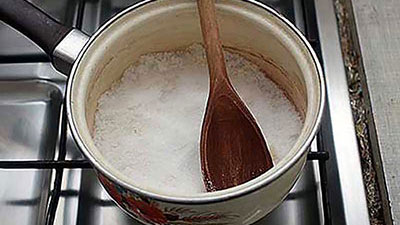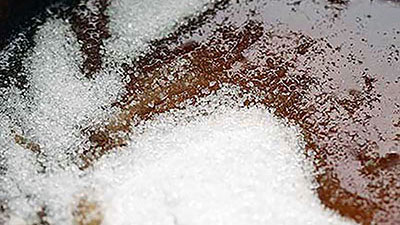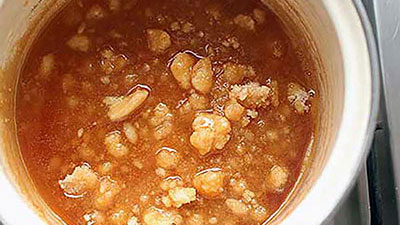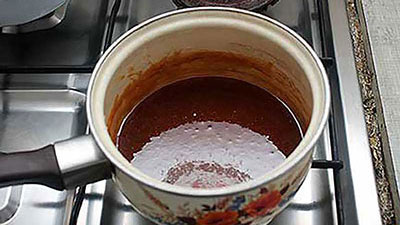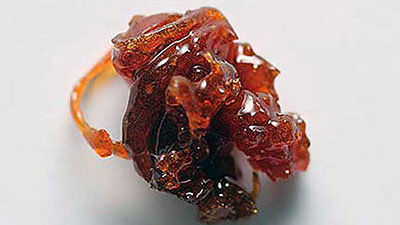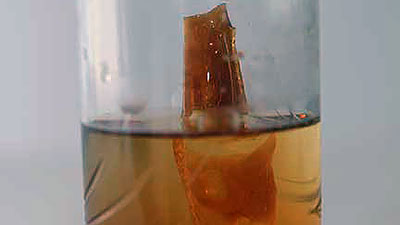Meats and Sausages
Caramel
Caramel is the main colorant used in production of alcoholic spirits. The range of colors it produces varies from light yellow, yellow, light brown, brown and dark brown. It is obtained by burning white sugar which starts to melt at 160° C (320° F). Quality caramel is made at 180-195° C (356 - 383° F). Burning it at lower temperatures produces caramel with a weak color, going over 200° C (393° F) may burn it so much that little charcoal pieces may come out of the solution, which will be noticeable in a clear spirit.
Procedure:
Keep hot water ready on a stove.
- Heat a pan over small heat for a few minutes and then scatter ½ cup of sugar (3.8 oz, 102 g) on the bottom. Spread it equally.
- Heat the sugar until it starts turning brown, keep on stirring using a wooden spoon. Continue melting the sugar, stirring often until it liquefies and acquires a deep golden color. If you see the smoke or smell burnt sugar lift the pan and lower the heat. Remove from heat and let cool to about 60° C (140° F).
- Start adding hot water slowly, continuously stirring the mixture with a wooden spoon. Place the pan back on the burner and simmer until caramel syrup is obtained. If you add 100 ml water to 100 g of caramelized sugar you will obtain syrup, but it will harden when it cools down. If you want liquid caramel syrup, you will have to add more water.
Caramel is the universal colorant for alcoholic drinks. It is quite powerful, you need just a little of caramel syrup or hard caramel to color the drink. Syrup will dissolve faster, but caramel rock will dissolve as well, after all it is just sugar.
Notes
- If sugar crystals form during the final heating discard them.
- The darker the color, the more bitter your coloring will be.
- Do not use non-stick or lined copper saucepans.
- Use caution as hot burnt sugar can boil violently when water is added. Take the pot off the heat, let it cool and don't stand over it while adding water. Don't get hot caramel on your skin or finger; it is a sticky substance and hard to remove.

